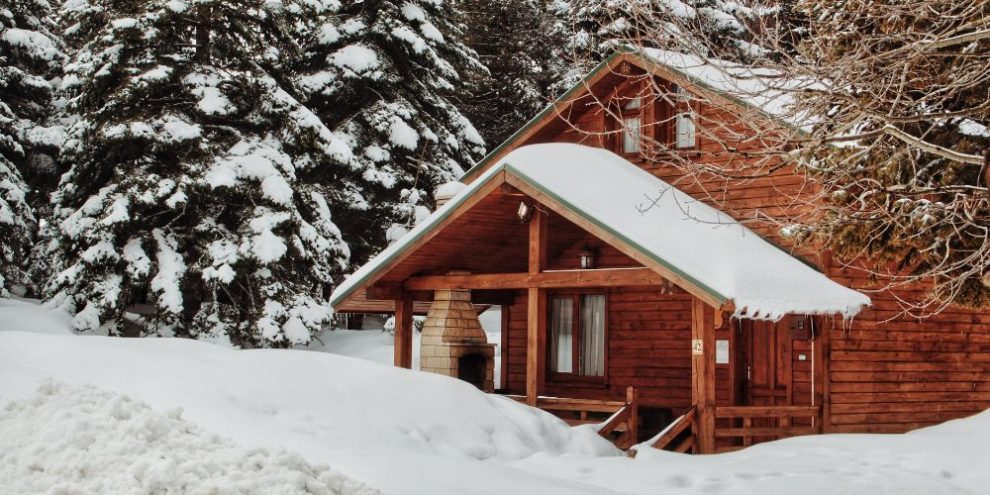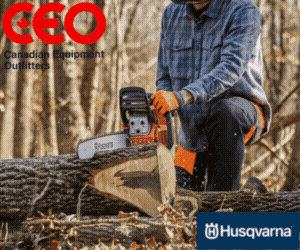
This Barrie 360 content is brought to you by Canadian Equipment Outfitters
For many, fall marks the end of cottage season. That means the October long weekend is usually spent doing fall maintenance, prepping the cottage for the winter and closing up.
While this process is different for each cottage and cabin owner, one thing is always the same … To avoid insurance claims in the new year, it’s important to be thorough.
To make sure you don’t miss any critical steps, we’ve pulled together this list of essential items to help you winterize your cottage.
1. Prevent Water and Septic Damage
One of the most costly problems for cottagers over winter months is burst pipes and potential flooding. Not only can it destroy your property … some cottage owners don’t have the right insurance to cover the damages.
That's why it's so important for you to winterize the plumbing at your cottage.
How To Prevent Water Pipes From Freezing
To help prevent your pipes from bursting, follow these steps.
- Turn Off The Water
Shut off the main water supply for your cottage. While there’s no standard location, shut off valves are usually in basements or crawl spaces. If your cottage is on a slab, check near the water heater.
- Drain Your Pipes
Some cottages and cabins have a single drain valve to remove all the water from the system. If this is the case for your summer home, turn on the drain valve and allow the water to drain out. To be sure it properly drains, turn on a faucet at the highest point in your house (i.e. the upstairs bathroom sink). Once drained, turn off the tap and the drain valve. Leave the drain valve open a bit to let any excess water drip out.
If you do not have a single drain valve, turn on all your interior taps starting in the basement and moving up. This includes outdoor faucets. Leave your taps on all winter so any remaining water can drip out. - Empty Toilets
Turn off the supply to your toilet and then flush it. Open the toilet tank cover and hold the flusher down until all of the water drains out of the tank. If you have multiple toilets, start at the top floor of your cottage and move down.
- Don’t Forget Appliances
If you have fridges that dispense ice and water, a washer or dishwasher at your cottage, you will want to winterize these as well. Follow manufacturer recommendations for shutting off and winterizing each one. If you forget about them, any remaining water could freeze and break the appliance.
- Winterize Your Cottage Hot Water Tank
If you’re leaving the electricity on, you can leave your water heater on. To help save energy, set it to the lowest setting and close in and out valves.
If you have a gas heater or are turning off the power to an electric heater, you will want to drain and shut down your tank. Follow manufacturer instructions to empty the tank. Once empty, leave the drain valve open slightly so remaining water can drip out into a pan or bucket. - Use Antifreeze
No matter how thorough you are, water can still get stuck in your drains. Specifically in the bottom of your toilets or P-traps (the u-shaped pipes under your sink).
Pour a cup of antifreeze into each drain to prevent this water from freezing. For toilets, it’s recommended that you put enough water to fill the toilet to its usual water line. You can also add a cup of antifreeze to your washing machine tub.
Be sure the antifreeze is rated for potable water, such as an RV/Marine antifreeze. - Protect Exposed Lines
If you have exposed water supply lines, insulate them with pipe insulation to keep them out of the cold. You’ll also want to remove your water intake line from the lake if you have one you won't be using.
How To Winterize The Septic At Your Cottage
Septics should be pumped out every 3 years or so to keep them in proper working condition. There are also some telltale signs that it’s time to inspect or pump out your system.
- Your drains are emptying slowly
- You have a weak flush
- There is a bad smell near your septic tank
- Water is pooling near the tank
- You have healthy thick grass above the tank
How To Winterize The Sump Pump At Your Cottage
Sump pumps draw in water from around your cottage and pump it away to avoid flooding.
- Ensure Your Pump Is Working
Before you close up for the winter, you want to be sure the sump pump is working. Pour water into the sump pit - if it doesn't get pumped out you have a problem.
- Remove Exterior Drain Hose
You want to detach any drain hose extensions that are outside of the foundation. Over the winter, this exposed pipe can freeze and crack. Even worse, it could cause back up problems if it isn’t dealt with before the spring thaw, leading to flooding and a worn out pump.
- Clean The Pit
Before closing up for the winter, be sure to clean out the sump pit. This means removing any debris or build up that could cause a blockage.
- Keep It Plugged In
While some people may consider having the hydro turned off for the winter, keeping it on does have its benefits. One of the most significant is that it lets you keep your sump pump on. While the main worry in winter is freezing, a warm front can occur anytime. If your sump pump is off, this could lead to flooding.
You’ll also want to be sure the sump is heated to prevent the pit, pump and interior pipes from freezing. If you have gas heat, turn it off to prevent fire hazards and instead use a space heater. To reduce hydro, keep the temperature at around 10°C to 12°C. You may also want to consider a smart heater so that you can monitor it while away from the cottage.
RELATED: Deputy Fire Chief emphasizes the importance of proper heater use following local fire ...
2. Inspect And Prep Roof
Snow build up on your roof can cause ice damming, leaks and even flooding. To prevent this from happening, inspect the roof exterior and determine whether there is anything that needs attention. Some common things to look for include:
- Structural damage
- Cracks in masonry
- Sagging areas with standing water
- Loose shingles
While up there, give your gutters a good clean to help with drainage and consider installing gutter guards or downspout leaf catchers.
Inside, look for cracks, mold, sagging and water stains on the upper ceiling. All these can be signs you have a problem.
3. Prevent Rodents
When winter comes, rodents will try to find the most sheltered and warm place to escape. A closed up cottage with minimal foot traffic is the perfect place.
To help stop squirrels, racoons, birds and other critters from moving in, don’t feed them during the summer. While it can make for great photo ops, it also makes the animals see your cottage as an easy food source.
When closing up, you can help prevent rodents by taking a couple of easy steps.
- Remove All Food
To prevent wildlife from making your cottage their home, clear out your cupboards and fridge. Don’t leave anything.
Keep fridge and freezer doors propped open to prevent odor and mildew - you can use something like a paper cup, pen or chopstick. Tape it into place to be sure it doesn't fall out.
- Fill Any Holes
Inspect the outside of your cottage from roof to foundation and caulk any holes or cracks. Mice can compress themselves to squeeze through holes as small as 6 mm.
- Protect Other Entry Points
Once you have checked for cracks and holes, be sure to close off any other potential entrances. This includes closing and locking all doors to the outside. If you have a chimney, you’ll want to cap it and close the damper after cleaning it out.
If you have any exterior structures with screens, consider boarding them up to prevent rodents from chewing their way in.
4. Unplug Appliances
Earlier, I mentioned that you want to leave the electricity on for your sump pump and an accompanying heater. But that isn’t the only reason to leave it running. It is also necessary if you want to power alarm systems and exterior lights.
If you don’t have any of these in your cottage or cabin, then you can turn the power off completely.
If you do decide to keep your hydro on, be sure to unplug unused appliances including your water heater, fridge, stove, tvs and more. This will prevent phantom power and reduce the risk of fire.
While unplugging everything, take the opportunity to inspect outlets and plugs. If you see any melting or burn marks, you will want to look into it further to prevent electrical fires over the winter.
5. Clean Up Outside
Vacant properties are very tempting to burglars. To help deter criminal activity, take everything with you that you can. If you plan on leaving bigger items like canoes, BBQs and furniture, store them inside or lock them down with chains. Do not store propane tanks in the house. Disconnect them from your BBQ and store them in a well ventilated area, off the ground.
You will also want to clean up the yard. This includes a final mow, cutting back perennials that need it and mulching leaves. You can also rake leaves into your gardens and around the base of trees to insulate them and provide additional nutrients.
Once your yard is ready, you can start to winterize your cottage equipment. Start by cleaning tools, sharpening blades, lubrication and stabilizing. Once this is done, store them in a locked shed or take them with you to store at home.
If you have a dock in a body of water that is prone to ice movement, disassemble and haul out the dock. Even if there isn’t any ice movement, you may want to pull in your dock to prevent liability issues and other issues.
Your very own summer getaway is an excellent way to spend the warmer months! But you have to be sure to take proper care of it, or it will become an even bigger expense.
While each cottage is unique, these 5 steps will help reduce surprises and the associated clean up bills when summer returns.













